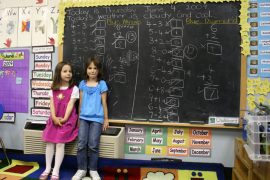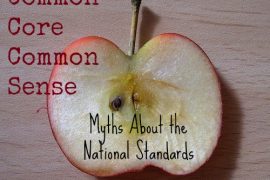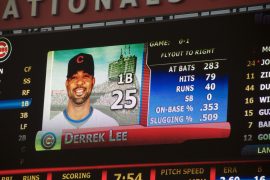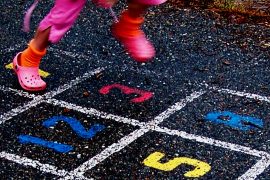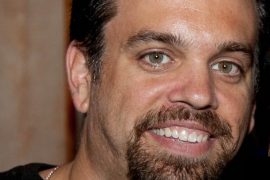In the IT field, there are many machines and programs that are really confusing and difficult to understand. Not only do we have to trust and depend on these machines, but also the people who service them. Joe Thompson is one of the good guys. He provides assistance to the users and companies when they need it most. From consulting to maintenance, Joe and his colleagues are there for us when our technology isn’t working quite right. (Joe is also one of my former geometry students. It’s been great to reconnect with him and see how accomplished he is now!)
Can you explain what you do for a living?
Red Hat’s consultants help customers get our products working when they have specific needs that go beyond the usual tech support. We are essentially advanced computer system administrators on whatever our customers need us to be to get Red Hat’s products to work for them. Common consulting gigs are setting up Red Hat Satellite to manage the customer’s servers, or doing performance tuning to make things run faster or a “health check” to verify things are running as efficiently as possible.
We just put out a marketing video about our consulting for public-sector clients, actually:
https://www.youtube.com/watch?v=eMzANG3Yhlk(We do more than just public sector and cloud, of course.)
When do you use basic math in your job?
The most common is when tuning a system to perform well, or configuring various things. Unit conversions and base conversions are especially important.
IT has a long-running math issue actually: does “kilo” mean “1000” (a round number in base 10), or “1024” (a round number, 10000000000, in base 2)? There are various ways people try to indicate which is intended, like using a capital K vs. a lowercase k, or using KiB vs. KB. This matters in a lot of cases because when you get up into large data sizes, the difference between round numbers in base 10 and base 2 gets pretty big. A 1-TB hard drive (a typical size today, maybe even a little small) is a trillion bytes — 1000 to the fourth power, not 1024 to the fourth power. The difference is about 10% of the actual size of the drive, so knowing which base you’re dealing with is important.
Then there are units that have to be converted. A common adjustment for better performance is tweaking how much data is held in memory at a time to be transmitted over the network, which is done by measuring the delay between two systems that have to communicate. Then you multiply the delay (so many milliseconds) by the transmission speed (so many megabits or gigabits per second) and that gives the buffer size, which you have to set in bytes (1 byte = 8 bits) or sometimes other specified units.Sometimes software writers like to make you do math so they can write their code easier. If a program has options that can either be on or off, sometimes a programmer will use a “bitfield” — a string of binary digits that represent all the options in a single number, which is often set in base 10. So if you have a six-digit bitfield and want to turn off everything but options 1 and 6, you would use the number 33: 33 = 100001 in binary.
Do you use any technology (like calculators or computers) to help with this math? Why or why not?
I’ve always done a lot of arithmetic in my head and I can at least estimate a lot of the conversions without resorting to a calculator. I’ll break out the calculator if the math is long and tedious though, like averaging a long column of numbers, or if I need a precise answer quickly on something like how many bytes are in 1.25 base-10 gigabits — I can do the billion divided by 8 and come out with 125 million bytes per base-10 gigabit, and then multiplying by 1.25 I know I’m going to be in the neighborhood of 150 million bytes, but I need the calculator to quickly get the exact answer of 156250000 bytes. If I’m on a conference call about that kind of thing I’ll use the calculator more than otherwise.Google introduced a new feature a couple of years ago that will do basic math and unit conversions for you, so if I’m deep into things or just feeling lazy I can also just pull up a web browser and type “1.25 gigabits in bytes” in the search bar, and Google does it all for me. But recently I noticed I was reaching for the calculator more, and arithmetic in my head was getting harder, so I’ve been making a conscious effort to do more head-math lately.
How do you think math helps you do your job better?
Without math, I couldn’t do my job at all 🙂 Even so little a thing as figuring out how long a file will take to transfer takes a good head for numbers. As soon as you dig under the surface of the operating system, it’s math everywhere.
How comfortable with math do you feel? Does this math feel different to you ?
I’m pretty comfortable with math. A lot of my off-time hobbies touch on computers too so it’s a lot of the same math as work even when I’m not working.
What kind of math did you take in high school? Did you like it/feel like you were good at it?
I took the standard track for an Advanced Studies diploma from grades 8-11 (Algebra I, Geometry, Algebra II, Advanced Math), plus AP Calculus my senior year, and always did well. I didn’t expect to like Geometry going in because it’s not one-right-answer like a lot of math, but I ended up enjoying the logical rigor of proofs. (Though I do recall giving my Geometry teacher fits on occasion when my proofs took a non-standard tack…)
Did you have to learn new skills in order to do the math you use in your job? Or was it something that you could pickup using the skills you learned in school?
Most of it was learned in school, although base conversion isn’t something we spent a lot of time on. I got good at it through long, frequent practice as you might guess…
Do you have a question for Joe? Send me your question and I will forward it to him.



